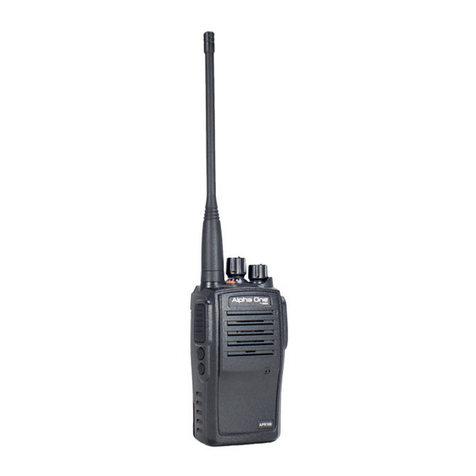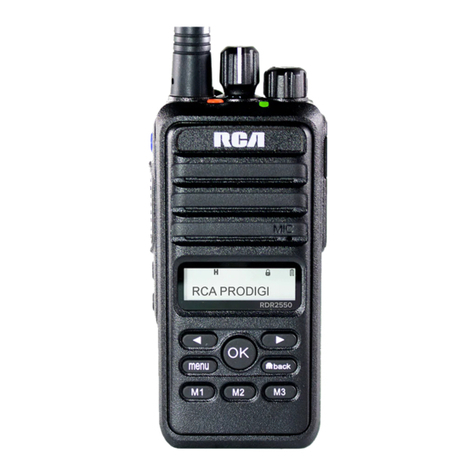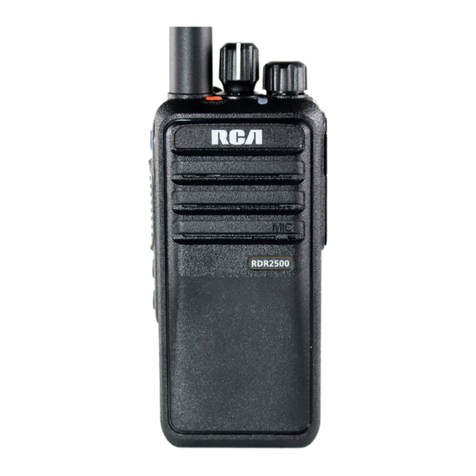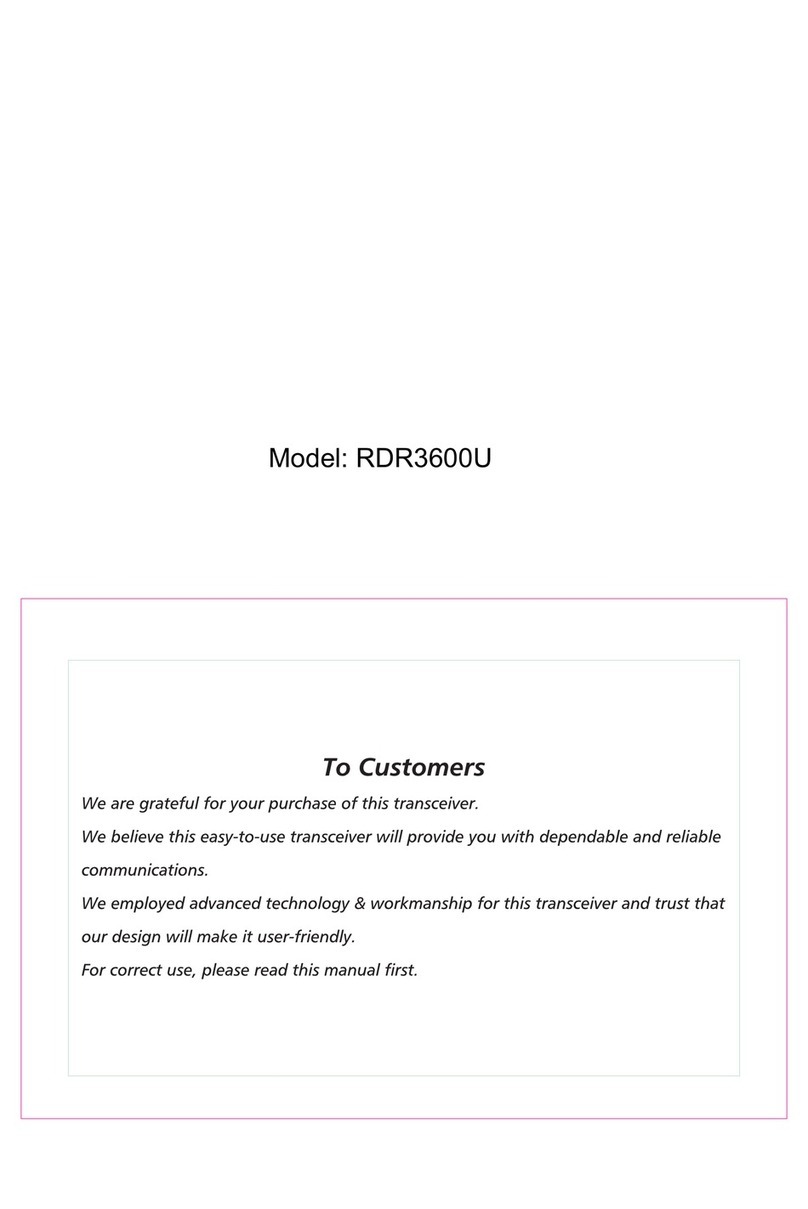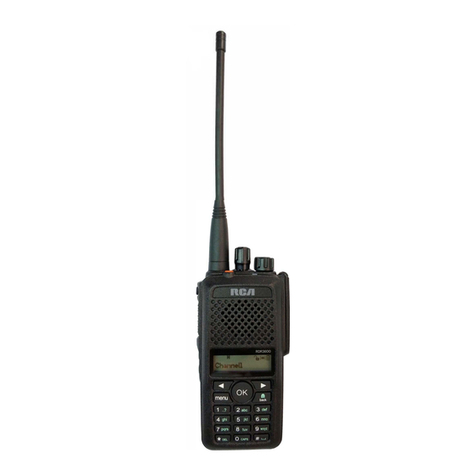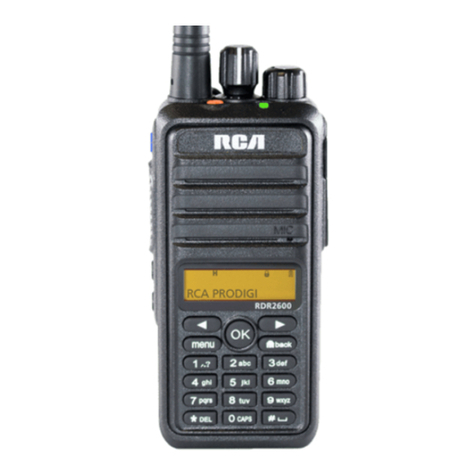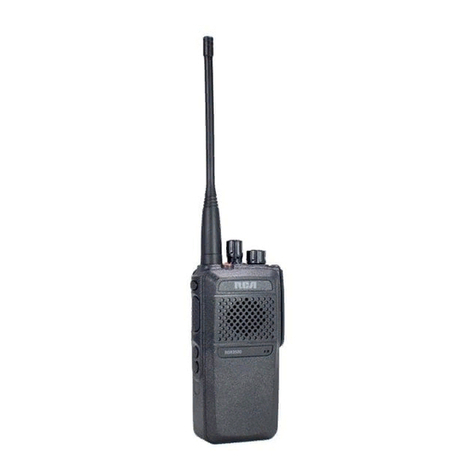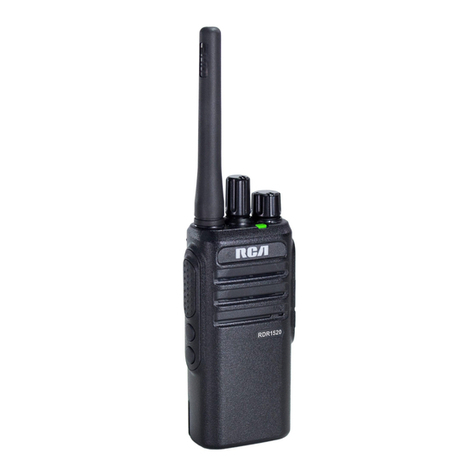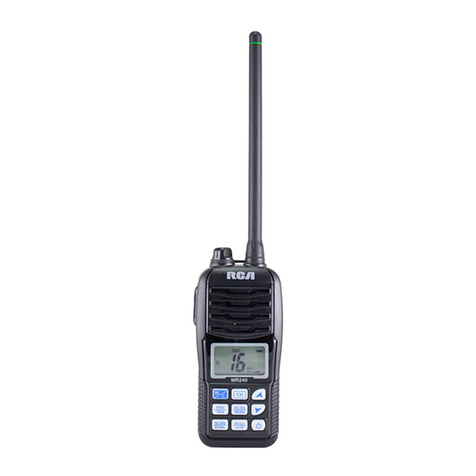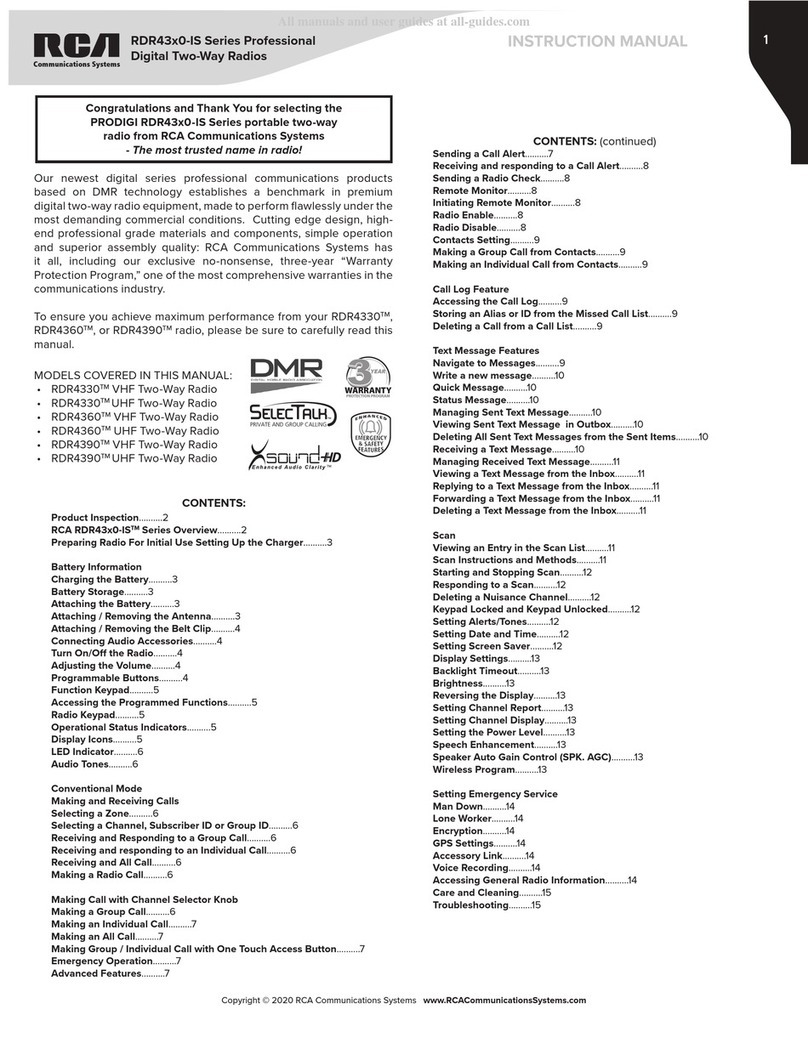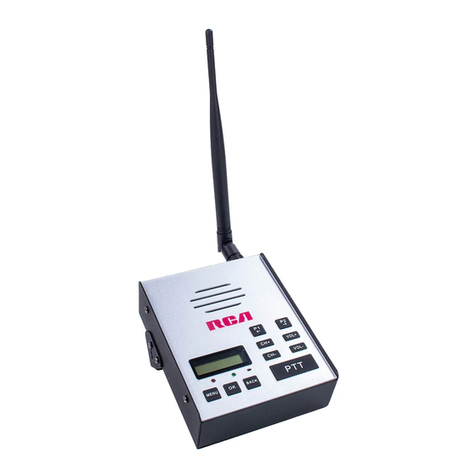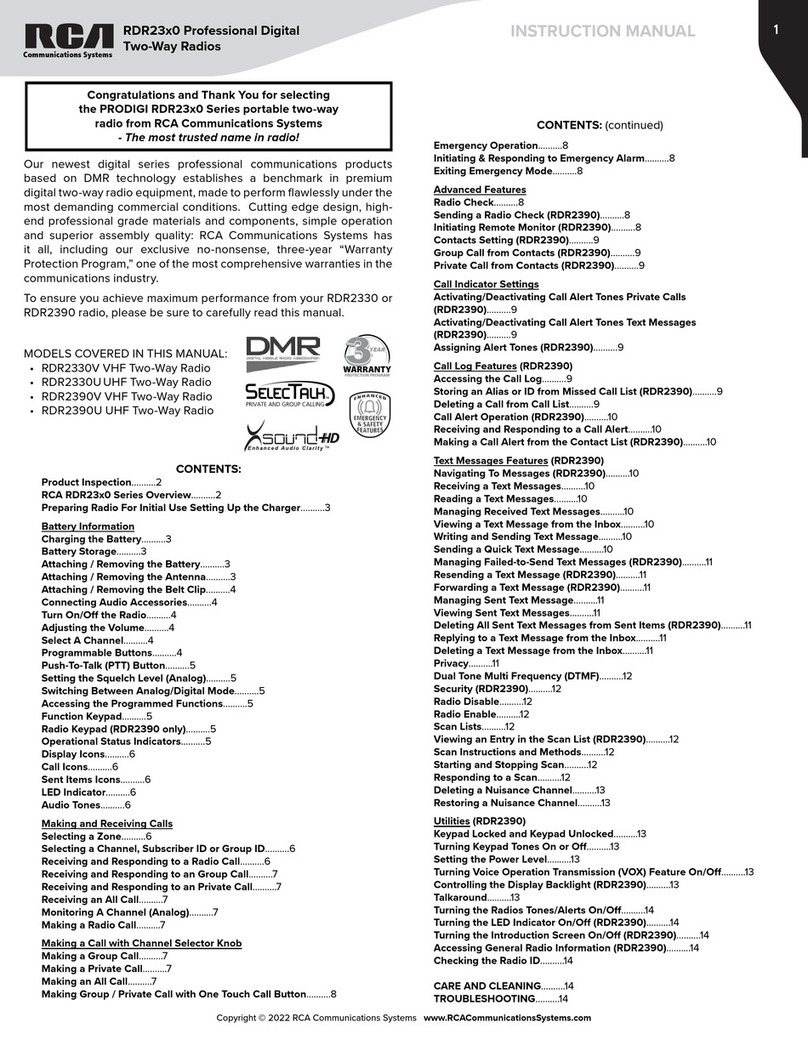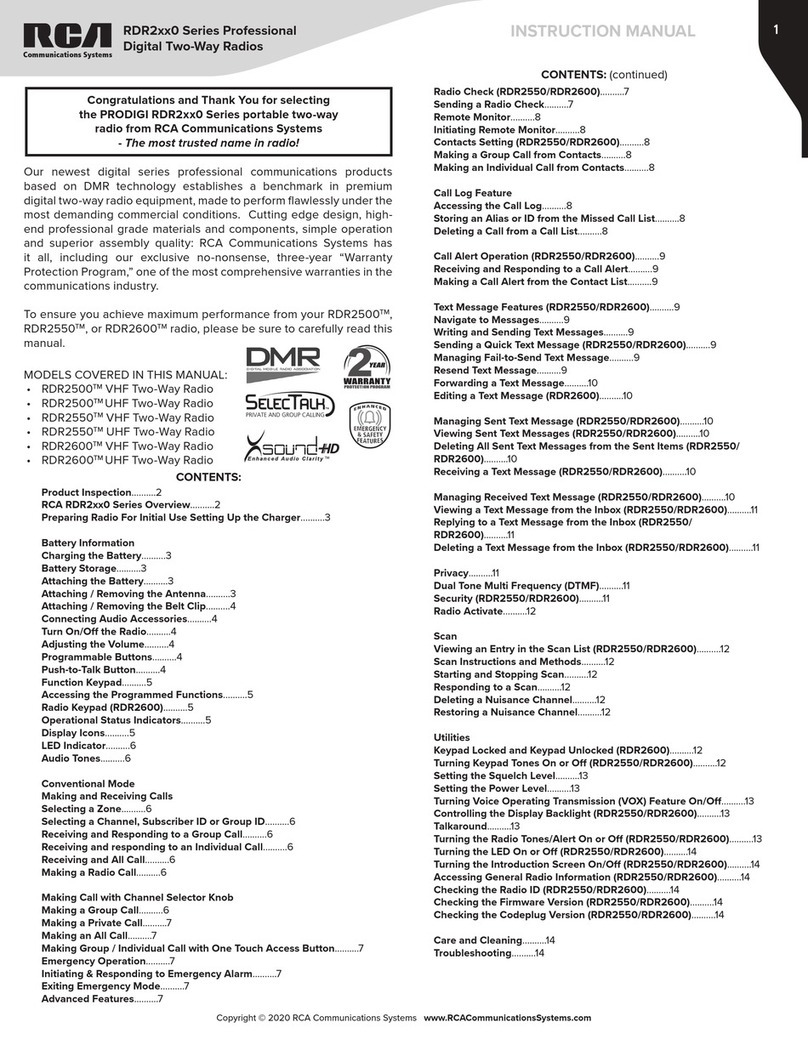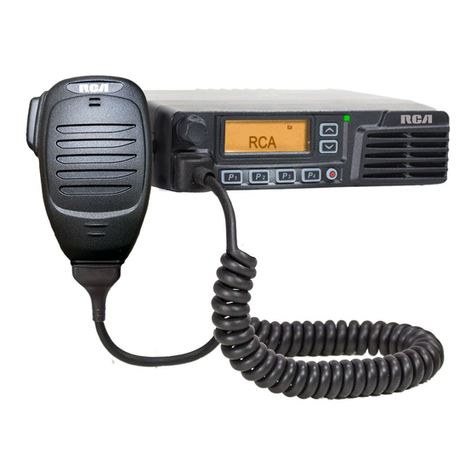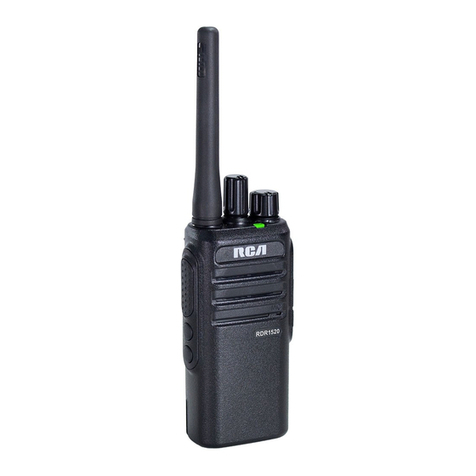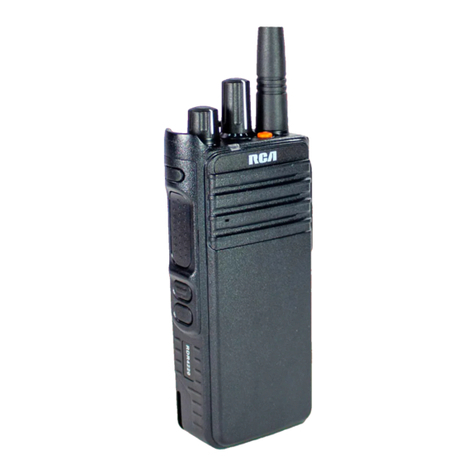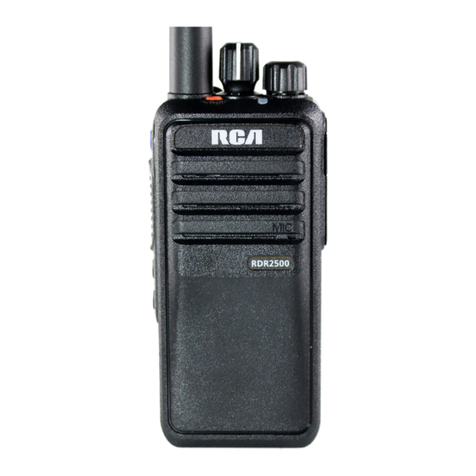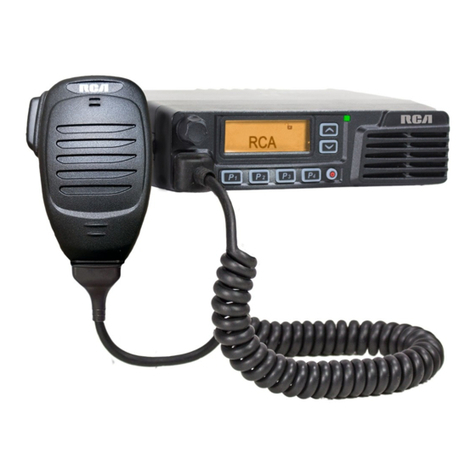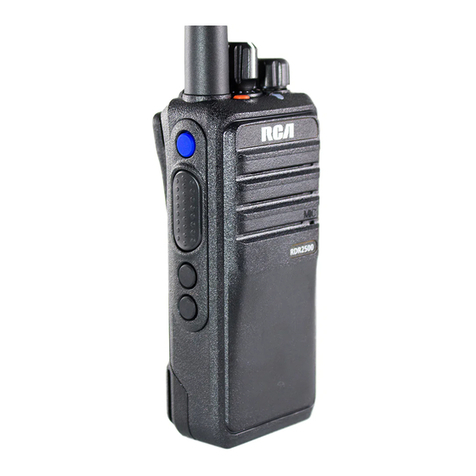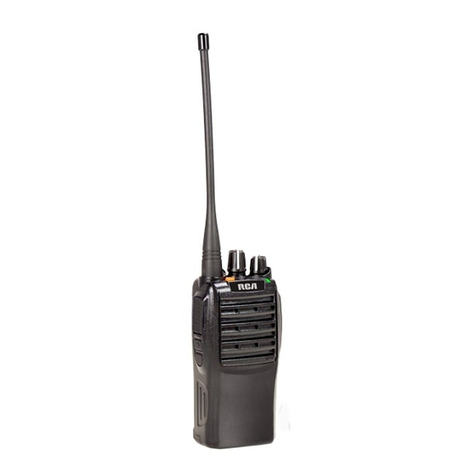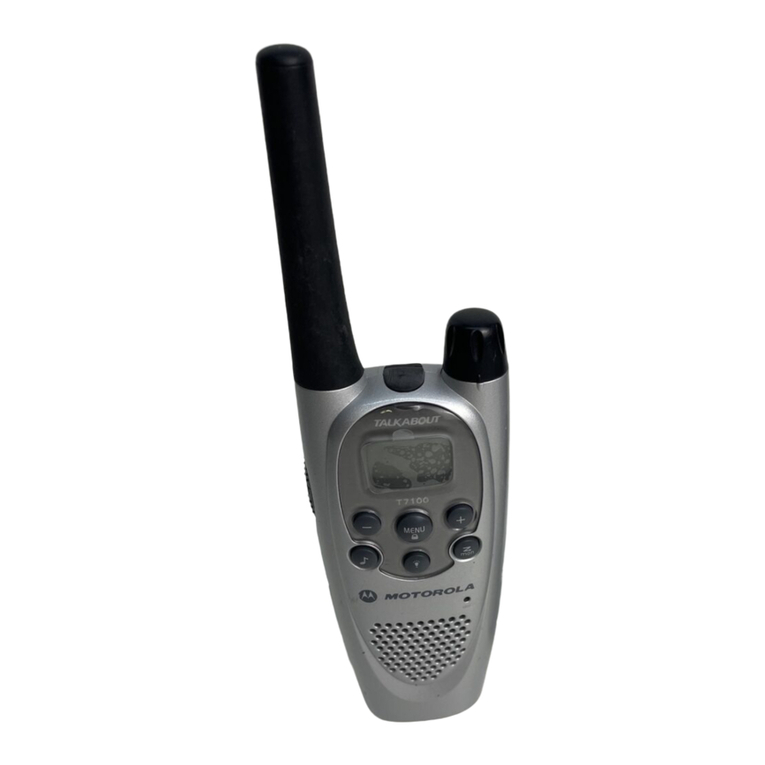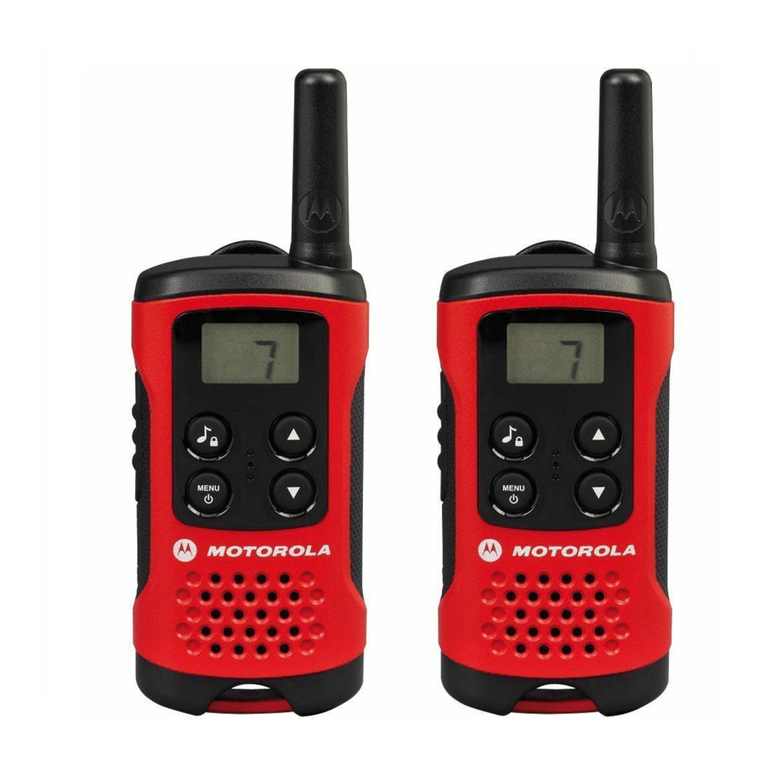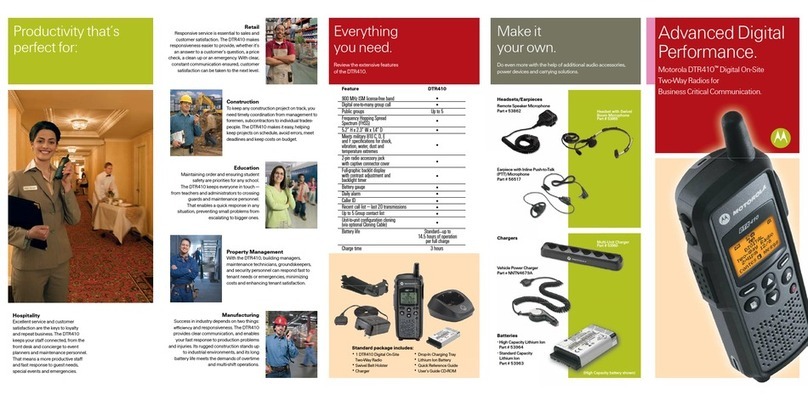Copyright © 2015 RCA Communications Systems
BRM300DTM Professional Digital Two-Way Mobile Radio Instruction Manual
2
Technical Specications...................................4-5
Safety and General Information.......................6
Product Inspection..............................................7
Transceiver Preparation ...............................8 - 13
Installation/Tools Needed....................................8
DC Power Cable Connection ......................9 - 10
Mobile Installation ..........................................10
Fixed Station Installation .................................10
Replacing Fuses ..............................................11
Antenna Connection ......................................12
External Speaker ............................................12
Microphone Jack ............................................12
Microphone Hanger .......................................12
Transceiver Features ...................................13 - 14
Operational Status Indicators ....................15 - 17
Making/Receiving Calls .............................17 - 18
Select A Channel ...........................................18
Setting Squelch Level ...............................18 - 19
Switching Between Analog/Digital Mode .........19
Programmable Buttons ..............................19 - 20
Accessing Programmed Function/Menu ...........21
Keypad Mic (Optional)* ...................................21
Using Menu/Programmed Functions ........22 - 27
Selecting a Zone ..............................................22
Selecting Radio Channel/Subscriber/Group ID ...22
Receiving/Responding to a Radio Call ...............22
Receiving/Responding to a Group Call ............22
Receiving/Responding to a Private Call ............23
Receiving an All Call .......................................23
Monitoring a Channel (Analog) ........................23
Making a Radio Call .......................................24
Making a Call With Channel Selector Buttons ..24
Making a Private Call .....................................25
Making a All Call ............................................25
Making Group/Private Call W/1 Touch Button ...25
Emergency Operation .....................................26
Initiating/Responding to Emergency Alarm ......27
Exiting Emergency Mode ...............................27
Advanced Features .......................................27-51
Public Address ................................................27
Radio Check ..................................................27
Sending a Radio Check ...................................27
Remote Monitor ..............................................28
CONTENTS:
